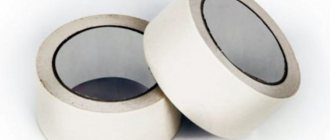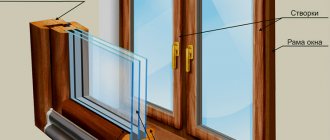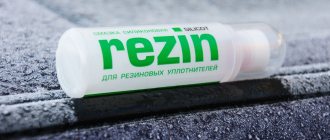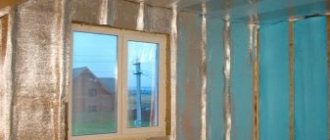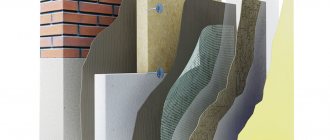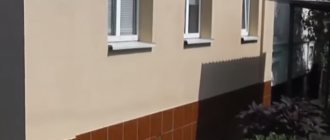How to glue thermal tape on windows. How to insulate old wooden windows for the winter
This short article will tell you how you can quickly and without significant costs insulate old wooden windows for the winter.
Personally, I encountered the problem of window insulation when I rented an apartment. In summer and early autumn the apartment was comfortable, but when severe frosts began, the old wooden windows began to feel cold. The main source of cold was the cracks at the bottom of the window - between the frame and the window sill.
The method that will be discussed below will help to cope with the problem temporarily, which is, in principle, suitable when the apartment is not yours or you are just planning renovations.
To insulate windows, we need a special material - thermal tape.
This is a very common and inexpensive material. The average retail price of a roll (length - 10 m, width 50 mm) is approximately 30 rubles. One roll is enough to insulate a standard kitchen window in a Khrushchev-era apartment building. That is, for a two-room apartment you will need 3-4 rolls, which in total will be 90-120 rubles.
The thermal tape is self-adhesive, that is, an adhesive composition is already applied to its surface, which is a big plus. It is also worth noting that the glued heat tape holds securely, but if necessary, it can be easily removed without damaging the paintwork or leaving marks. This material, useful for the home, is made of polyethylene foam, which has excellent thermal insulation properties.
It is recommended to carry out work on window insulation at temperatures above +10 o C, this will ensure reliable adhesion of the adhesive composition of the material to the surface of the window frame, slopes and window sill.
We take a roll of thermal tape and glue the window around the perimeter, as well as between the sashes.
Smooth the glued area with your hand, cut off the excess with a construction knife or scissors. The entire process of insulating windows is very simple and takes a minimum of your time. Comfort and warmth to your home!
Tips for choosing
As a rule, a tape is selected based on three indicators.
By material
- Foam rubber ― has been used for insulation since ancient times. Currently it is included in the tape.
- low cost;
- high elasticity, allowing you to close gaps of different sizes.
There are also disadvantages:
- Due to the porous structure, moisture is quickly absorbed. The drying process takes a very long time;
- low durability. With prolonged use, the material turns yellow and crumbles.
- Polyvinyl chloride (PVC) ― material with high strength and adhesiveness. It is not afraid of humidity and temperature fluctuations. The tapes are fixed on any surface and stretch well.
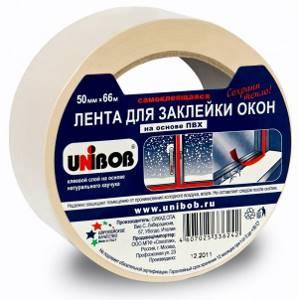
How to seal windows with soap. How to glue windows with soap for the winter
We glue windows with soap
Man has always thought about improving living conditions and the comfort of his home. This has always been the case at all times. Strong winds and harsh winters leave little choice, forcing residents to seal their windows and insulate their homes. Of course, at the current stage of development of the construction industry there are many modern technologies for sealing windows and further retaining heat. Also, no one has canceled expensive plastic windows, which can forever solve the issue of saving heat in your apartment.
But not every family can afford to buy modern windows, and they are simply accustomed to gluing windows with soap for the winter the old fashioned way. Or in some other old and proven way, it doesn’t matter. There are a large number of old and quite effective methods for sealing windows that remain relevant to this day. We will discuss the most famous and widely used, affordable method of sealing windows using strips of paper or fabric and simple laundry soap.
Eliminating shortcomings
The primary task before starting window covering is the following.
There are more convenient pasting methods
It is necessary to carefully examine all potentially dangerous places from where cold air can pass into the room. Determine how you want to insulate your windows. Then you need to purchase materials and available tools, if necessary. One of the simplest and most affordable methods of insulation is to cover windows with soap for the winter. This is the most popular and beloved method that our grandmothers and mothers used in those years when there was no talk of other innovations. The work, in principle, did not require much physical effort and consisted of several stages:
- Carefully seal all detected cracks with rags or cotton wool using a knife;
- cut strips of paper;
- soak the pieces of paper in soapy water and carefully stick them on the window frames.
The main advantage of this method is that the white paper or fabric is not noticeable and does not interfere with the aesthetic appearance of the window. The soap itself simultaneously serves as an adhesive and sealant, and also does not allow cold or wind to pass through. Also, already cut paper or fabric strips can be used several times without losing the quality of window insulation. The disadvantage of this budget method is that if there is a sharp change in temperature, the paper may peel off.
When the warm season approaches, strips of paper or fabric can be easily and without much physical effort peeled off by simply moistening them with warm water. Typically, this very affordable and effective method is used to cover old wooden windows. In addition, instead of cotton wool, you can use other materials that are available on the farm. https://www.youtube.com/watch?v=diWmEA1RPlI
Last few tips
Before the cold weather, every person begins to think about such an important question: how to save heat and insulate windows? This issue is all the more relevant and acute given the increasing prices for energy resources. It is known that poorly laminated windows do not retain even half the heat. Now there are modern insulating materials that allow you to effectively cover windows and contribute to impressive heat retention. But with such a variety of means, the choice always remains only with the person, which method of insulating windows, modern or old-fashioned, to choose.
Insulation of windows with paper
A simple and affordable old method of insulation is to stick paper on the joints of the window. The paper is cut into strips and glued with a soap solution. The room remains warm. The only drawback is that when peeling off the paper, the paint is removed along with the paper, leaving unsightly marks.
An easily accessible method is insulation with ordinary tape. The downside is that with temperature changes and high humidity, the tape comes off, requiring replacement.
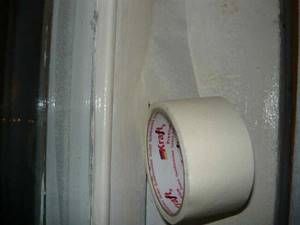
How to properly glue seals to wooden windows. Using tape to insulate windows
Reading time: 8 minutes.
Any window needs additional sealing. This is especially important if street noise has increased, a draft has appeared, and heat is lost in winter. It is best to do insulation in warm weather. Many methods are used for this, including replacing the window. Fortunately, there are building materials that successfully solve this problem. This material is considered to be insulation tape.
About insulation
The microclimate of the room depends on the windows. Due to uninsulated windows, the glass fogs up, cracks and fungus appear on the slopes, and there is always a draft and street noise. To effectively insulate windows, it is necessary to determine the reasons for low thermal insulation.
Most often they are the following:
Wooden windows
First of all, insulation is required for old window structures for the following reasons:
- Previously, glass was secured to the frame with special putty. Over time, it dries out and becomes stained;
- the frames dry out, so cracks and gaps appear between the glazing bead and the glass;
- the sashes are deformed and are not held tightly to the frame.
Plastic windows
It is mistakenly believed that such windows are quite airtight and therefore do not need insulation. Unfortunately, after a few years the seal collapses, and insulation is indispensable.
There are other reasons why it is necessary to deal with plastic windows:
- violation of window installation technology;
- distortion of the window structure due to shrinkage of the house;
- factory defect of window design;
- mechanical damage to structural elements.
Types of insulating tapes
The widespread use of tapes for insulating windows is explained by a number of reasons:
- no annual replacement required;
- insulation is carried out in a short time on our own;
- there is no dirt when pasting, since no water is used;
- no traces of adhesive remain on the frame;
- there is no diffusion of the adhesive layer with the frame paint.
But this method of insulation also has disadvantages:
- after gluing, you cannot open the window sashes;
- Poor-quality or poorly glued tape lags behind the frame in small areas.
Construction stores offer two types of tapes, which differ in the installation method.
Pasting
Foam tape with adhesive base
This type of tape has a wide grip. The adhesive composition is applied during manufacturing (self-adhesive type) or during installation work.
To create self-adhesive tape, polyvinyl chloride, rubber and polyethylene foam (foam rubber) are used.
Due to the plasticity of these materials, the tape is easily compressed to the size of the gap. To ensure that the insulation does not stand out against the background of the window, dyes are added: black, brown, white.
Typically the packaging will indicate the size of the gap that the tape will cover. Popular options with sizes 3 - 7 mm.
Insulation with adhesive tape
The insulation technology is not very complicated. First of all, it is necessary to follow the sequence of work.
Plastic windows
Insulation is carried out in the following sequence:
- pre-removed old insulation is used, firstly, to purchase similar material, and secondly, to pre-cut the old material to size.
- gluing begins from the top of the window. As you progress, the protective layer is removed in small sections, and the tape is pressed tightly.
More details in our video:
1. The pasted tape should not have many tears.
2. In the corners the tape is not cut, but wrapped.
Wooden windows
For these windows, in addition to adhesive tape, thin foam rubber is often used. The work is performed in the following sequence:
- strips of foam rubber are cut along the window opening;
- cut foam rubber is placed between the frames;
- The tape is cut to the size of the window;
- The tape is applied with a sticky layer to the foam rubber and smoothed with a napkin.
This insulation will last up to three years. But it’s better to do it as shown in the video:
How to seal windows with soap. How to glue windows with soap for the winter
We glue windows with soap
Man has always thought about improving living conditions and the comfort of his home. This has always been the case at all times. Strong winds and harsh winters leave little choice, forcing residents to seal their windows and insulate their homes. Of course, at the current stage of development of the construction industry there are many modern technologies for sealing windows and further retaining heat. Also, no one has canceled expensive plastic windows, which can forever solve the issue of saving heat in your apartment.
But not every family can afford to buy modern windows, and they are simply accustomed to gluing windows with soap for the winter the old fashioned way. Or in some other old and proven way, it doesn’t matter. There are a large number of old and quite effective methods for sealing windows that remain relevant to this day. We will discuss the most famous and widely used, affordable method of sealing windows using strips of paper or fabric and simple laundry soap.
Eliminating shortcomings
The primary task before starting window covering is the following.
There are more convenient pasting methods
It is necessary to carefully examine all potentially dangerous places from where cold air can pass into the room. Determine how you want to insulate your windows. Then you need to purchase materials and available tools, if necessary. One of the simplest and most affordable methods of insulation is to cover windows with soap for the winter. This is the most popular and beloved method that our grandmothers and mothers used in those years when there was no talk of other innovations. The work, in principle, did not require much physical effort and consisted of several stages:
- Carefully seal all detected cracks with rags or cotton wool using a knife;
- cut strips of paper;
- soak the pieces of paper in soapy water and carefully stick them on the window frames.
The main advantage of this method is that the white paper or fabric is not noticeable and does not interfere with the aesthetic appearance of the window. The soap itself simultaneously serves as an adhesive and sealant, and also does not allow cold or wind to pass through. Also, already cut paper or fabric strips can be used several times without losing the quality of window insulation. The disadvantage of this budget method is that if there is a sharp change in temperature, the paper may peel off.
When the warm season approaches, strips of paper or fabric can be easily and without much physical effort peeled off by simply moistening them with warm water. Typically, this very affordable and effective method is used to cover old wooden windows. In addition, instead of cotton wool, you can use other materials that are available on the farm. https://www.youtube.com/watch?v=diWmEA1RPlI
Last few tips
Before the cold weather, every person begins to think about such an important question: how to save heat and insulate windows? This issue is all the more relevant and acute given the increasing prices for energy resources. It is known that poorly laminated windows do not retain even half the heat. Now there are modern insulating materials that allow you to effectively cover windows and contribute to impressive heat retention. But with such a variety of means, the choice always remains only with the person, which method of insulating windows, modern or old-fashioned, to choose.
How to insulate windows. No. 5. Insulation of a wooden window with foam rubber and sealant
A much more modern, reliable and effective method of insulation is the use of foam tape and sealing cords.
Foam tape is inexpensive, but its service life is only about 2 years. This method of insulation is optimal when sufficiently large gaps have formed between the sashes and the frame. The installation process itself is simple, but labor-intensive, since everything needs to be accurately measured and carefully glued so that the window is well insulated, but at the same time does not stop closing normally. The main advantage of this method is the ability to open the window.

The process of insulation with foam tape comes down to the following:
- measuring the required length and width of the tape. The length should correspond to the perimeter of the valves, and the compressed width should correspond to the width of the voids;
- the places on the doors where the tape will be glued must first be cleaned of dust and degreased with alcohol or acetone;
- foam rubber tapes are produced, as a rule, with a self-adhesive base, so the task is simplified and comes down to only removing the protective layer and carefully gluing the foam rubber to the designated places;
- Some experts advise additionally sealing the window with paper tape, but this loses the main advantage of the method - the ability to open the window whenever you want. An alternative solution is to glue foam rubber in several rows.
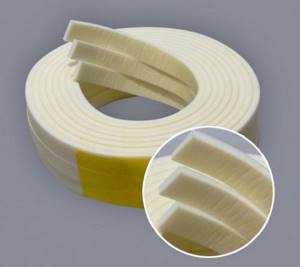
Insulation made using sealing cords will be much more durable. They are made from different materials:
- rubber;
- polyvinyl chloride;
- polyethylene foam;
- polyurethane.

The main advantage of a rubber seal is its price, but when the temperature drops, it can harden and break. In addition, rubber is highly wear-resistant, so it is best chosen for windows that constantly open and close. Although other types of cords are more expensive, they perform much better in terms of operation.
Sealing cords are made in different shapes - the choice depends on the size of the cracks in the window structure:
- a seal whose profile resembles the letter P is suitable for windows with medium-sized cracks;
- seal with a D-shaped profile - for sealing fairly large gaps;
- seal type E - for windows with small gaps.
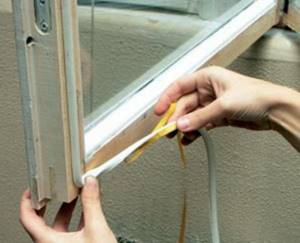
Tubular seals allow you to achieve a fairly high level of sealing, do not interfere with the free opening of the window, can be left in the summer and serve for several seasons in a row. The seal may have a self-adhesive base and then its installation will be identical to the installation of foam rubber tapes described above. If you take such a seal, pay attention to the shelf life of the glue: if it comes to an end, the cord may either not stick at all or quickly peel off.

The safest thing to do is to take the seal separately and the glue for it separately, which can be used as silicone sealant. In this case, the durability of the insulation reaches 5 years.
There is one more nuance. All work with tubular profiles is carried out at temperatures above +100C, so it is better not to delay it until cold weather. The seal must be glued very carefully so as not to disrupt the opening system of the sashes.
How to properly glue seals to wooden windows. Using tape to insulate windows
Reading time: 8 minutes.
Any window needs additional sealing. This is especially important if street noise has increased, a draft has appeared, and heat is lost in winter. It is best to do insulation in warm weather. Many methods are used for this, including replacing the window. Fortunately, there are building materials that successfully solve this problem. This material is considered to be insulation tape.
About insulation
The microclimate of the room depends on the windows. Due to uninsulated windows, the glass fogs up, cracks and fungus appear on the slopes, and there is always a draft and street noise. To effectively insulate windows, it is necessary to determine the reasons for low thermal insulation.
Most often they are the following:
Wooden windows
First of all, insulation is required for old window structures for the following reasons:
- Previously, glass was secured to the frame with special putty. Over time, it dries out and becomes stained;
- the frames dry out, so cracks and gaps appear between the glazing bead and the glass;
- the sashes are deformed and are not held tightly to the frame.
Plastic windows
It is mistakenly believed that such windows are quite airtight and therefore do not need insulation. Unfortunately, after a few years the seal collapses, and insulation is indispensable.
There are other reasons why it is necessary to deal with plastic windows:
- violation of window installation technology;
- distortion of the window structure due to shrinkage of the house;
- factory defect of window design;
- mechanical damage to structural elements.
Types of insulating tapes
The widespread use of tapes for insulating windows is explained by a number of reasons:
- no annual replacement required;
- insulation is carried out in a short time on our own;
- there is no dirt when pasting, since no water is used;
- no traces of adhesive remain on the frame;
- there is no diffusion of the adhesive layer with the frame paint.
But this method of insulation also has disadvantages:
- after gluing, you cannot open the window sashes;
- Poor-quality or poorly glued tape lags behind the frame in small areas.
Construction stores offer two types of tapes, which differ in the installation method.
Pasting
Foam tape with adhesive base
This type of tape has a wide grip. The adhesive composition is applied during manufacturing (self-adhesive type) or during installation work.
To create self-adhesive tape, polyvinyl chloride, rubber and polyethylene foam (foam rubber) are used.
Due to the plasticity of these materials, the tape is easily compressed to the size of the gap. To ensure that the insulation does not stand out against the background of the window, dyes are added: black, brown, white.
Typically the packaging will indicate the size of the gap that the tape will cover. Popular options with sizes 3 - 7 mm.
Insulation with sealing tape
Plastic windows
Typically, plastic windows lose heat for two reasons:
- breakdown of fittings;
- seal wear.
Correct installation of the tape increases the insulating ability of the window. The following sequence of work is recommended:
- before installation, the tape is kept at a positive temperature, since this affects its expansion inside the groove;
- The tape is cut to fit the window. The joints are cut at right angles. For thermal expansion, a reserve is created: for every meter 1 centimeter of material;
- The tape is pressed into the groove with a spatula, and the adhesive strips are removed in small sections.
Important!
1. In the corners of the frame, the tape is connected only end-to-end.
2. To prevent impregnation from leaking out, the tape is not compressed more than the permissible value.
After installing the sealing tape, the locking mechanism is adjusted: the pressure is changed by trunnions, which are located at the end of the sash.
Adjustment is made with a hex wrench. The pressure increases when the trunnion head is installed in a horizontal position.
“Warm” window installation: what is it, and is it worth the candle?
Proper installation of windows traditionally raises a lot of questions among developers. The narrowest places are considered to be the “cold” and wind-blown junction of the window to the wall and the slopes that freeze in winter, on which mold can appear. These problems can be solved by doing the so-called. “warm” window installation, which we will talk about in this article.
- Why do windows “cry”, slopes freeze and fungus appears on the windowsill?
- How to improve the thermal insulation parameters of the unit: wall-window.
- How to insulate a window opening yourself using EPS.
How to stick
So, you have chosen and bought self-adhesive insulation, how to glue it to the windows? Remember at the beginning we said that the adhesive layer makes installation easier? So, this is actually true.
- If there is one, remove the old insulation by prying it with a knife;
- Thoroughly clean the working surface of the frame or glass. You may need a rag or brush for this. Sometimes the remnants of old glue need to be removed with a knife or sandpaper;
- Degrease the surface with an alcohol solution;
- After the surface has dried, remove the protective tape from the purchased insulation;
- Gently press it against the frame or glass.
Remember, the tape will be completely glued only after 2 hours.

Condensation on windows and mold on slopes: causes and solution to the problem
Plastic windows “crying” in winter are a negative phenomenon familiar to many city residents and owners of private houses.
The second problem is mold that appears on the slopes or windowsill.
How to avoid this? To answer this question, you need to understand the mechanism of this phenomenon. With the classic heating and natural ventilation scheme, radiators are placed below the window.
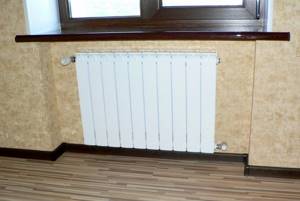
The radiator captures cold air and raises the heated flow upward. Near a cold window, in winter, part of this flow cools and goes down.
Modern plastic windows, unlike old structures through which cold, dry air from the street constantly penetrated, are sealed. If there is a wide window sill at the bottom of the window (covering the radiator), or the radiator is mounted in a niche.
This prevents the natural mixing (exchange) of air masses and a stagnation zone forms near the window.
As a result, the glass blowing is disrupted. Warm air saturated with water vapor comes into contact with the cold glass unit, cools and condenses. This moisture flows down the window. It drips on the windowsill, accumulates in corners, etc.
You can solve the problem like this:
- Reduce the width of the window sill.
- Make holes in the window sill to improve the circulation of warm air coming from the radiator.
- Place a convector in the window sill or install heating elements, for example, an electric heating cable.
If the single-layer wall is very wide (in cold regions), then the window moves inward by increasing the thickness of the quarter. This reduces the width of the window sill, minimizes the stagnation zone and improves glass flow.
Schemes for the distribution of air flows and internal air temperatures in the area where windows made of PVC profiles are located at different installation depths in the thickness of the outer wall;
- a - when placing the window unit near the outer surface
- 6 - when the window block is shifted to the center of the wall
Also, in modern PVC windows, a valve is installed for micro-ventilation (air flow, ventilation and additional ventilation of the window area) during the cold period.
The above is only part of the solution to the problem. Often, in addition to “crying” windows, the slopes in the house become damp and moldy.
Foam insulation. Choosing foam insulation for windows and 6 stages during installation
Light sources can be insulated with different materials. Why then does it make sense to choose foam insulation for windows? Being, at its core, polyurethane foam, this material retains heat well due to its porous structure. It is very elastic and has a high percentage of compression, which allows it to be used in the smallest crevices.
Foam rubber strips were used for window insulation several decades ago. But today, based on yellow material, there are factory-made insulation materials that help insulate windows from the cold easily and quickly.
Did you know that: Foam rubber is the name of a Norwegian company that supplied elastic polyurethane foam to the Soviet Union. Over time, the proper name became a common noun and now foam rubber is called this same type of polyurethane foam, which was actually invented in Germany in the 1940s, and, by the way, was initially only a by-product, an undesirable product.
But, this is a lyric, but in fact we will look at quite practical things, how to choose, how much it costs and how to mount a foam seal on a window frame. But first, for those curious: how this material is produced. (If you are not the inquisitive type, skip the second paragraph and go straight to the third).
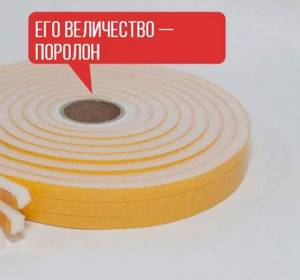
Production of foam rubber
To produce the material you need two components:
- Polyester;
- Isocyanate.
Water is also used.
When mixed, organic substances mixed with water form carbon dioxide. As a result of foaming, a hollow, dough-like mass is created that is quite soft and quite strong. After hardening, the foam rubber only needs to be formed into slabs/pieces of the desired form factor. We tend to associate foam rubber with the color yellow, but in fact it can be painted in any color.
So, let's conclude: foam rubber is one of the varieties of polyurethane.
Types of foam insulation
At the beginning of the article, it was already noted that this material is well suited for thermal insulation of window openings. But it is worth noting that there are different options for foam insulation.
Foam rubber is presented in the form:
- Cut strips;
- Coils (long strips);
Also, when specifying characteristics, the profile size, thickness and height of the strip are often indicated.
In addition, there is self-adhesive foam rubber and insulation without an adhesive base.
Another important characteristic is the density of the material. However, this parameter is rarely specified. If you try the foam rubber to the touch, it should be as elastic as possible. This property will allow it to be used in cracks of different sizes and to “plug” the insulation into even a small crack.
Price issue
Note that foam insulation is far from the most expensive of the possible options. EPDM seals, especially foreign ones, are much more expensive.
Below is a table from one of the online stores, where you can see the cost of insulation without a self-adhesive base.
Self-adhesive foam tape for window insulation:
Let's calculate the cost of foam tape for one window using an example.
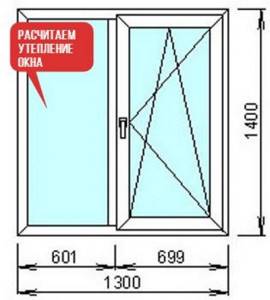
The window in the example has a width of 1300 mm and a height of 1400, which means that the insulation perimeter requires 1300 + 1300 + 1400 + 1400 mm of tape = 5400 mm or 5.4 m. If we additionally insulate not only the joint between the frame and the wall, but also the joint frames and sashes will additionally come out:
1400mm x 2 + 700 mm x 2 = 4200 m or 4.2 m. Thus, to maximum insulate our window we need 5.4 + 4.2 = 9.6 m of insulation. To do this, one package of Polypack worth 70 rubles will be enough for us. You will also need a special tape for covering windows, but it is also inexpensive.
After this calculation, it becomes more clear why people choose foam rubber as insulation for windows. It's cheap material.
So, we calculated the cost and purchased the required amount of material. Let's move on to installation.
Installation
When insulating windows using foam rubber, follow the following sequence:
- We dismantle the previous insulation or its remains, if there was one.
- Initially, the glass and frames with which the insulating strip will come into contact must be clean. We remove the remaining paint and glue from the previous insulation. It is best to wipe the glass itself. (This is especially necessary if you plan to stick thin strips at the junction of glass and frame). After cleaning, go over the frame with a rag to remove any remaining dust.
- Degreasing the surface is an important stage of work. An alcohol solution will do. Thanks to this stage, the self-adhesive foam will stick well and will not fall off.
- We evaluate the gaps between the frame and the wall. If the gap is very large, it is better to use wide strips, driving them into the gap.
- In the case when the wind blows into the windows through narrow cracks or when you need to insulate the gap between the sash and the frame, it is better to use thin (in the form of a narrow strip) self-adhesive foam rubber. Let us remind you that all contact points between the adhesive side and the surface must be degreased.
- You need to carefully glue a special tape over the cracks sealed with foam rubber.
How to avoid the appearance of fungus on slopes
For example, there is a wall made of aerated concrete. There is no insulation of the facade. The temperature outside the house is minus, and the temperature inside is positive. Let’s say it’s 26°C outside and + 20°C indoors. Window installed.
In this design, a window (even a high-quality one with several cameras and energy efficient) is a cold bridge. Those. where the window is installed, the thermal contour of the wall is weakened, and the effective thickness of the aerated concrete (which affects the thermal resistance of the entire structure) is actually reduced, and the slope freezes. This can be visualized like this:
Because of this, part of the slope with the window frame ends up in the so-called zone. dew point. This in turn leads to condensation in this place.
The problem is aggravated by the fact that the slope is not covered with vapor-permeable material. Warm water vapor contained in the air of a living space tends to escape and easily penetrates into cold slopes, and conditions for moisture condensation are created in the structure. The slopes become waterlogged and mold and mildew appear on them.
Thus, although there are conditions for moisture condensation in the wall, there is no water vapor in the colder zone. The wall remains dry and “healthy” even at sub-zero temperatures.
Cost table
Self-adhesive insulation is sold wholesale and retail, as well as in coils (large skeins) and in small packages for private use. Below is a comparative table that will help you see the approximate cost of 1 linear meter from different manufacturers and from different materials.
| Manufacturer | Country of Origin | Cost of 1 linear meter | Packaging cost | Length (meters) | Insulation model | Material |
| Deventer | Germany | 42 | 250 rub. | 6 | S7256 | EPDM |
| Profitrast | Russia | 10 | 90 rub. | 9 | Standard, Profitrast | PVC |
| Economy | Russia | 3.6 | 44 rub. | 12 | PVC | |
| KIMTEC | Germany | 12 | 18 rub. | 1.5 | EPDM | |
| AVIORA | China | 8.2 | 82 rub. | 10 | Foam rubber | |
| — | Russia | 3.9 | 39 rub. | 10 | PPE | |
| Scotch tape for window insulation | Russia | 2.84 | 142 rub. | 50 |
It is clear that German insulation for windows made of synthetic rubber is the most expensive. Although their price is within reach. 40-50 rubles per linear meter is not so much, considering that one window requires 3-5 meters. You can insulate all the windows in an apartment for about 2,000 rubles.
How to make a “warm” window installation yourself
The technology of insulating slopes with extruded polystyrene foam is excellent for an ordinary country house. But, installing windows in energy-efficient homes requires a more advanced option. The thermal characteristics of the wall-window assembly can be improved by using the so-called system. "warm" installation.
These can be EPPS, PIR board, foam glass. The technology for “warm” installation of a window with facing brickwork is as follows, you need:
- Insulate the upper, right and left slopes with EPS.
- The base under the window is also insulated with EPS. But first, in the thermal insulation, you need to make a rigid support under the frame (under plastic support pads/wedges) to transfer the load to the wall, which will be discussed below.
- Additionally protect the mounting foam - from the inside with a vapor barrier, and from the outside with a vapor-permeable moisture-UV and windproof sealing material .
Conclusions and recommendations
“Warm” window installation is not a fashionable trend, but one of the typical components of an energy-saving house and a way to reduce heating costs and energy costs.
- For insulation and finishing of slopes, you cannot use vapor-permeable materials - stone wool, plasterboard.
- Using the principles described in the article and the above scheme for “warm” window installation (adjusting it to suit the specifics of your project), you can install a window structure in stone, frame houses, in cottages with an insulated “wet” facade, etc.
- If the window is located in an area of soft insulation, for example, stone wool, then in the lower part of the opening, under the frame, you need to make strong and rigid supporting platforms. This could be removing bricks from the masonry or metal brackets screwed to the wall.
On the topic we recommend studying:
We also recommend reading:
And watch the videos:
Source: www.forumhouse.ru
Insulation for windows and doors. Simple ways to insulate windows and doors
It is cold in many country houses and the reason for this is not poor heating, but insufficient insulation of your home. The biggest source of cold penetration into a home is windows. If the windows are poorly insulated, then air circulates in your house, they let cold air in and warm air out, thereby making the house cold.
The second source of cold is the door, it may be too large, such a door needs to be redone. Also, the door may simply be poorly insulated and it will let the cold in. The third source is your floor; cold air rises through the underground.
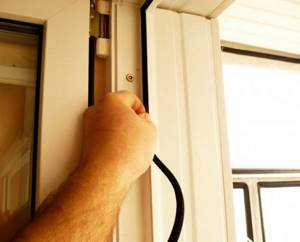
To insulate window frames, you do not need special building materials; you can insulate them with improvised means. The cold passes through the distance between the glass and the frame. This distance can be covered; several methods can be used for this.
The most common method is to cover it with plasticine; to do this, warm it up a little in hot water or just warm it in your hands. After the plasticine has become more elastic, spread it over this gap in a not very thick layer. After the plasticine hardens a little, it will not allow the cold to pass through.
You can also cover it with putty, but you need to work with it carefully, because if you cover it haphazardly, it will not look nice. The second place where your window frames let in cold is the gap between the end of the frame and the jamb itself.
To isolate this space, you will need special tapes (they can be found in hardware stores and are not expensive). There are two types of such tapes: regular paper tape and polystyrene tape.
Paper tape will not give a good enough result, so use polystyrene tape instead. In addition, this tape has a silver color, it reflects heat without allowing it to get to the window, thereby maintaining warmth in the house.
Insulating the door is also easy. To do this, you need to buy special heat-insulating fabric, this fabric is very dense and has a silver color that reflects heat. Cover the inside of the door with this fabric so that all ends extend to the other side (about five centimeters). In this way, not only the inside, but also the end part of the door is protected.
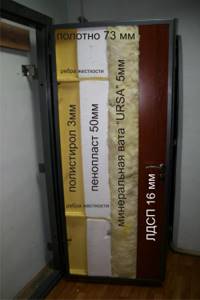
In order to insulate the floor you just need to cover it with linoleum; it will not allow cold air to pass through your floor. This way you will make your house much warmer.
But it also happens that after such insulation the room is still cold. Most likely this is the reason that the walls of the house are not well insulated. To correct this problem, you will need a glass wool pad; they can be purchased at any hardware store without any problems.
So, you need to install special fastenings that can be purchased along with the pillows. After this, you need to place the pillows in these fasteners and tighten them with self-tapping screws (use gloves when working with glass wool).
After the pillows are installed, they need to be covered, usually this is done with plasterboard or fiberboard. Now you can glue the wallpaper. By insulating your house in this way, you will forget about the cold for a long time.
